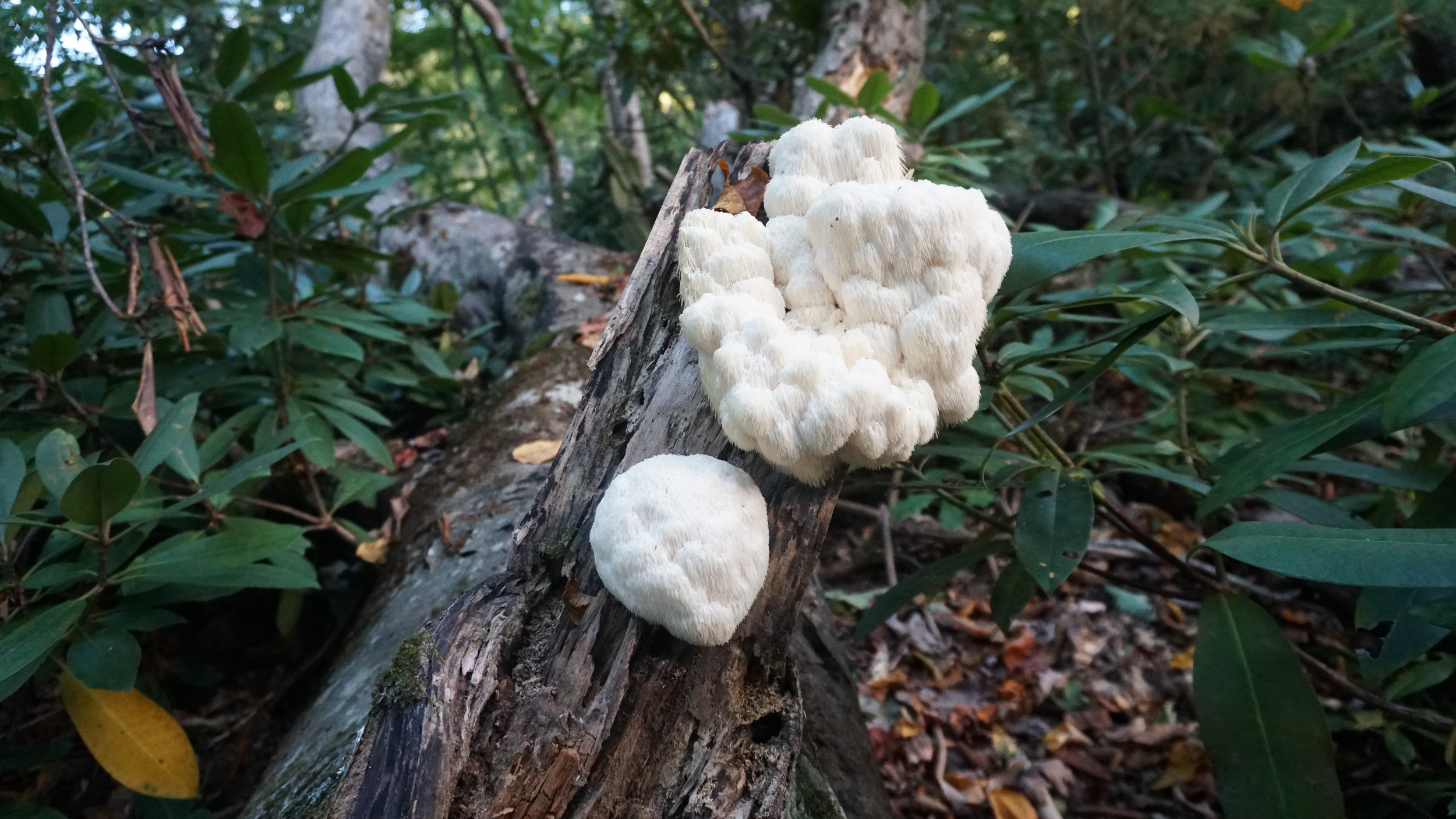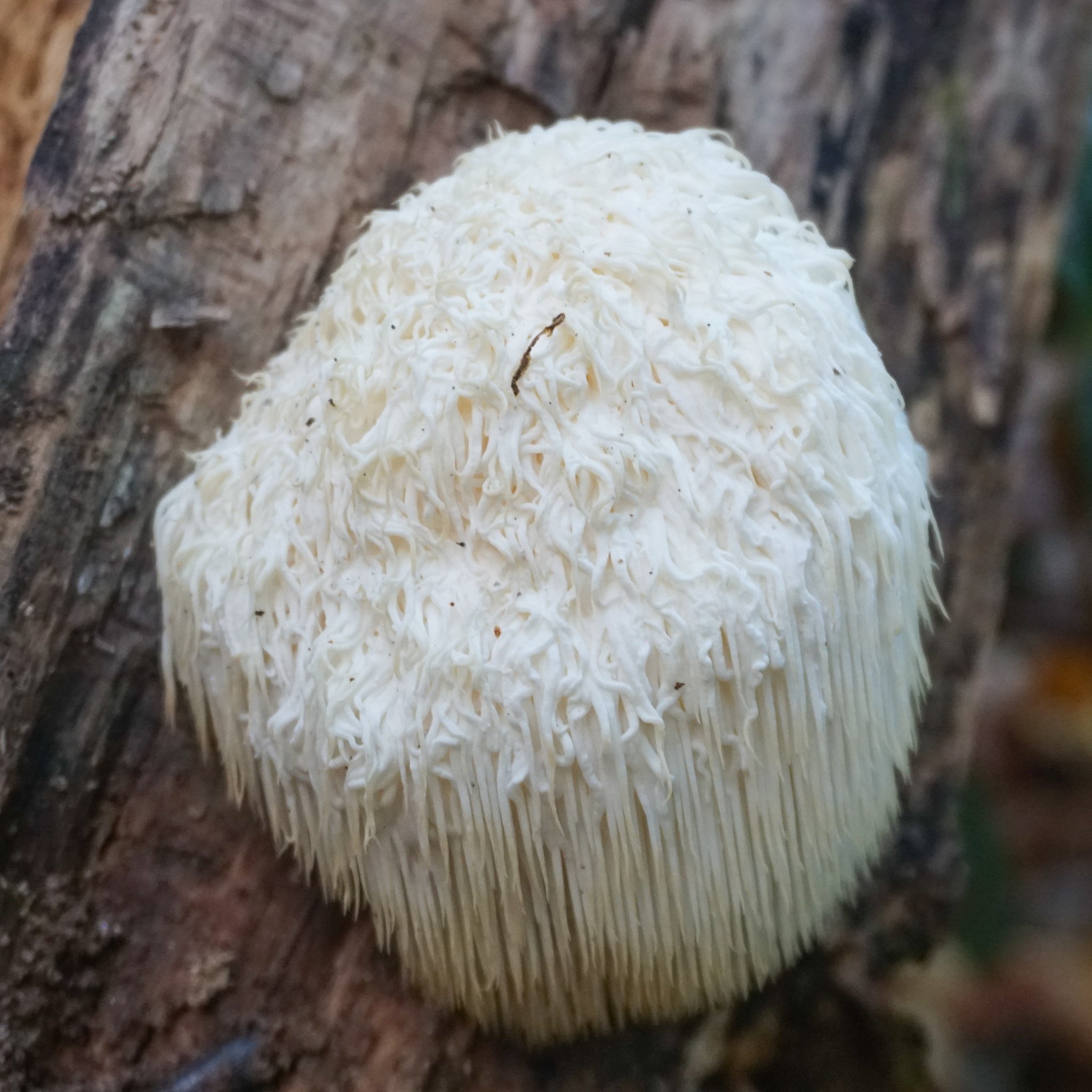Foraging Wild Lion's Mane Mushroom
Lion's Mane (Hericium erinaceus) is a wonderful edible and medicinal mushroom that grows on hardwood trees. In the later summer to fall months, you can even find it growing into early winter in some of the warmer regions like Western North Carolina. This mushroom grows on dying or dead hardwood trees and it has an affinity for oak and beech trees. Sometimes you'll find the mushrooms going really high up in the tree and you might need a really long ladder or a saw so you can get it from 15 feet up but you might have to climb for your lion's mane.
A young Lion’s Mane Mushroom slowly developing it’s spines
In the early stages, lion's mane can resemble a big marshmallow growing on the sides of trees. As it matures, the spines begin to take form. When it's fully mature the lion's mane spines will look like icicles dripping down from the mushroom. The spines can get to about three inches in length. As the mushroom starts to go bad, the spines will start to turn yellow. The spore print of this mushroom is white.
Lion's Mane vs. Bears Head Tooth vs. Comb Tooth Mushroom
There are no poisonous look-a-likes of this mushroom. However there are three varieties of Hericium genus in this region.
Those are true Lion's Mane (Hericium erinaceus), Bear's Head Tooth Mushroom ( Hericium americanum) and Comb Tooth Mushroom (Hericium coralloides). Now Bear's Head Tooth is very similar to the true lion's mane, except its spines can go in different branches whereas the true Lion's Mane is more compact and it all forms from one branch the true Lion's Mane form in clusters but it doesn't branch off.
The comb tooth mushroom is the most different of the Hericium genus and it branches off even more going in different directions so when you're harvesting lion's mane you can either use your hand to slowly pull it away from the tree or you can use a knife to cut it off.
Some people argue about you know you have to cut it or you have to hand pick it, but i think it doesn't make too much of a difference because the mycelium inside the tree is still intact and no damage you're just harvesting the fruiting body.
So I've harvested it with my hand before and it grew right back. I've also harvested with my knife before and it grew right back a week later. So I don't think it makes too much of a difference in the long run.
Medicinal Properties of Lion's Mane
While Lion's Mane is an excellent edible mushroom, it also has a whole host of medicinal properties. This mushroom has been shown to boost brain function, mental focus and it even contains nerve growth factors that can help repair neural networks and the myelin sheaths in the brain. it's also been shown to be anti-inflammatory and could have some effects on improving mood, specifically depression and anxiety. I have teas on my shop that combine lions made with other brain boosting herbs like Ginkgo, Siberian Ginseng, Lemongrass and Fennel.
Lion's mane is a coveted choice edible mushroom! They have a crab like texture with a slight seafood taste. They're very absorbent like a sponge and kind of soak up any flavor that's in the dish. I've made lions made into burgers, added them to pizza, and made stir fries and ramen with the mushrooms. I've also heard of people using lion's mane to make a really good crab cake.
How to Forage Lion’s Mane Mushroom




